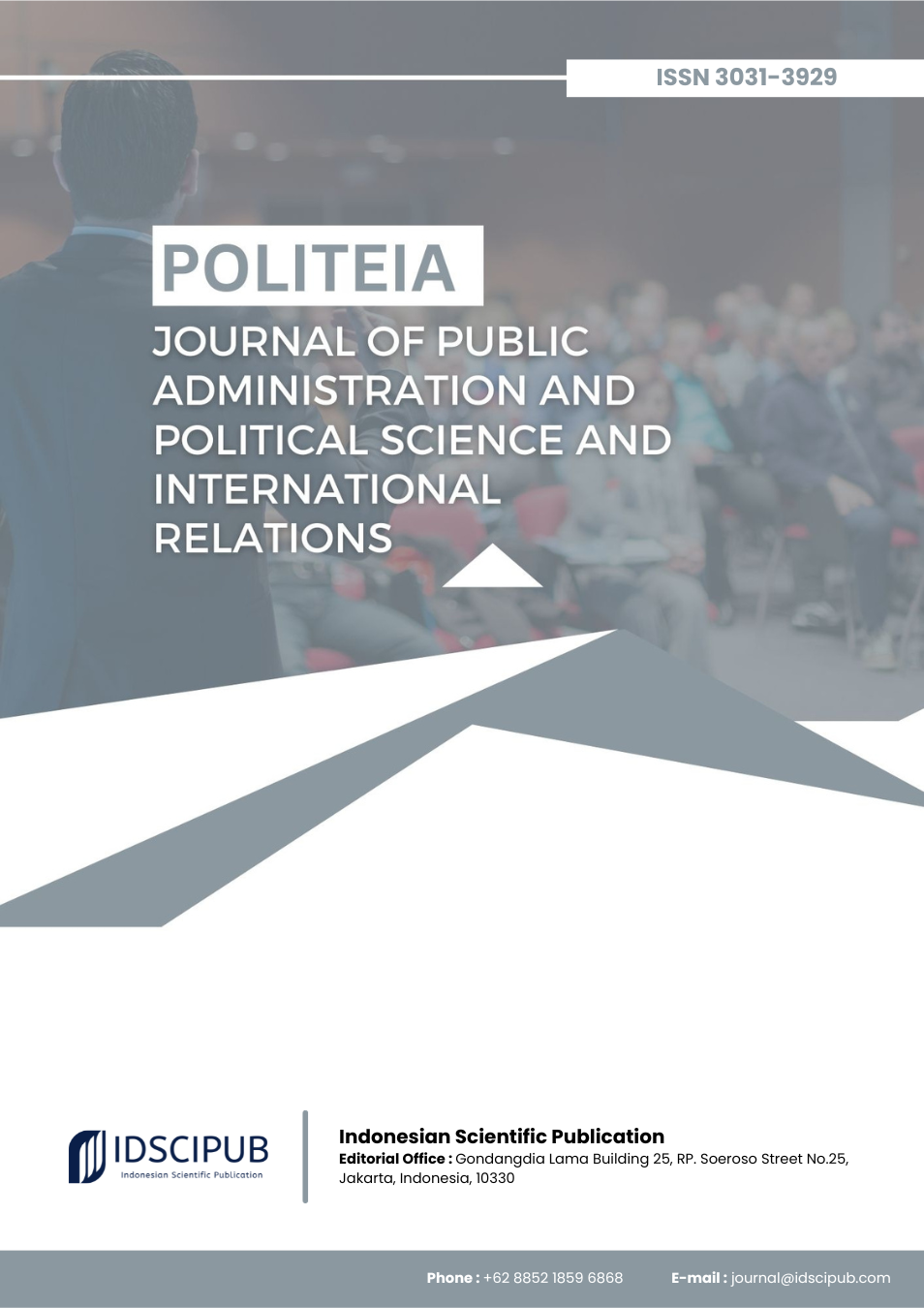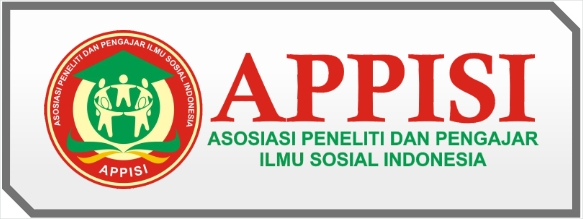Communication, Technology, and Coordination in Public Sector Crisis Response
DOI:
https://doi.org/10.61978/politeia.v2i2.964Keywords:
Crisis Management, Public Administration, Institutional Resilience, Governance Structures, Crisis Communication, Cyber Resilience, Digital TechnologiesAbstract
This narrative review examines strategies, policies, and lessons learned in crisis management within public administration, focusing on institutional resilience, governance structures, communication, cyber resilience, and technology integration. The purpose of this review is to synthesize current evidence and identify the main factors influencing effective crisis responses. A systematic search of peer-reviewed literature was conducted using databases including Scopus, PubMed, and Google Scholar, employing keywords such as crisis management, public administration, emergency response, disaster management, resilience, and risk communication. Inclusion criteria emphasized studies addressing governance, policy, and institutional practices in crisis contexts, while irrelevant or non-peer-reviewed sources were excluded. Findings reveal that institutional resilience, supported by managerial capacity, emergency planning, and adaptive responses, is essential for sustaining services during crises. Governance structures that balance centralization and decentralization, coupled with strong coordination, are more effective than rigidly centralized or fragmented systems. Transparent communication fosters citizen trust, as demonstrated in Taiwan and Singapore, while communication failures, such as in Brazil, undermine compliance. Emerging evidence highlights the critical role of cyber resilience, with cyberattacks disrupting public services globally during COVID-19. The integration of advanced technologies, supported by administrative capacity, further enhances crisis responsiveness. However, disparities between developed and developing countries underscore the role of systemic inequalities in shaping outcomes. The review concludes that future policies should strengthen institutional capacity, promote participatory governance, and invest in digital resilience, while further research is needed on long-term and cross-context evaluations.
References
Andrade, R., Sousa-Filho, J., Almeida, F., & Câmara, S. (2021). Pandemic fights in a network! COVID-19 challenges in northeast Brazil. Revista De Administração Contemporânea, 25(spe). https://doi.org/10.1590/1982-7849rac2021200256.en DOI: https://doi.org/10.1590/1982-7849rac2021200256.en
Astori, G., Bernardi, M., Bozza, A., Catanzaro, D., Chieregato, K., Merlo, A., … & Ruggeri, M. (2020). Logistics of an advanced therapy medicinal product during COVID-19 pandemic in Italy: Successful delivery of mesenchymal stromal cells in dry ice. Journal of Translational Medicine, 18(1). https://doi.org/10.1186/s12967-020-02625-0 DOI: https://doi.org/10.1186/s12967-020-02625-0
Bednarski, B., Singh, A., & Jones, W. (2020). On collaborative reinforcement learning to optimize the redistribution of critical medical supplies throughout the COVID-19 pandemic. Journal of the American Medical Informatics Association, 28(4), 874-878. https://doi.org/10.1093/jamia/ocaa324 DOI: https://doi.org/10.1093/jamia/ocaa324
Boin, A., & Lodge, M. (2016). Designing resilient institutions for transboundary crisis management: A time for public administration. Public Administration, 94(2), 289-298. https://doi.org/10.1111/padm.12264 DOI: https://doi.org/10.1111/padm.12264
Boschiero, N. (2021). COVID-19 vaccines as global common goods: An integrated approach of ethical, economic policy and intellectual property management. Global Jurist, 22(2), 177-230. https://doi.org/10.1515/gj-2021-0042 DOI: https://doi.org/10.1515/gj-2021-0042
Burkle, F. (2020). Declining public health protections within autocratic regimes: Impact on global public health security, infectious disease outbreaks, epidemics, and pandemics. Prehospital and Disaster Medicine, 35(3), 237-246. https://doi.org/10.1017/s1049023x20000424 DOI: https://doi.org/10.1017/S1049023X20000424
Burkle, F., & Devereaux, A. (2020). 50 states or 50 countries: What did we miss and what do we do now? Prehospital and Disaster Medicine, 35(4), 353-357. https://doi.org/10.1017/s1049023x20000746 DOI: https://doi.org/10.1017/S1049023X20000746
Catello, R. (2024). COVID-19, global public health justice, and the culture of organized irresponsibility. Journal of Global Faultlines, 11(1). https://doi.org/10.13169/jglobfaul.11.1.0103 DOI: https://doi.org/10.13169/jglobfaul.11.1.0103
Choi, H., Cho, W., Kim, M., & Hur, J. (2020). Public health emergency and crisis management: Case study of SARS-CoV-2 outbreak. International Journal of Environmental Research and Public Health, 17(11), 3984. https://doi.org/10.3390/ijerph17113984 DOI: https://doi.org/10.3390/ijerph17113984
Christensen, T., Danielsen, O., Lægreid, P., & Rykkja, L. (2015). Comparing coordination structures for crisis management in six countries. Public Administration, 94(2), 316-332. https://doi.org/10.1111/padm.12186 DOI: https://doi.org/10.1111/padm.12186
Graham, J., & Sibbald, S. (2021). Rebuilding public health on more than thoughts and prayers. Canadian Journal of Public Health, 112(4), 548-551. https://doi.org/10.17269/s41997-021-00529-0 DOI: https://doi.org/10.17269/s41997-021-00529-0
Greer, S., King, E., Fonseca, E., & Peralta‐Santos, A. (2020). The comparative politics of COVID-19: The need to understand government responses. Global Public Health, 15(9), 1413-1416. https://doi.org/10.1080/17441692.2020.1783340 DOI: https://doi.org/10.1080/17441692.2020.1783340
Hagen, L., Neely, S., Scharf, R., & Keller, T. (2020). Social media use for crisis and emergency risk communications during the Zika health crisis. Digital Government Research and Practice, 1(2), 1-21. https://doi.org/10.1145/3372021 DOI: https://doi.org/10.1145/3372021
Hassan, I., Mukaigawara, M., King, L., Fernandes, G., & Sridhar, D. (2021). Hindsight is 2020? Lessons in global health governance one year into the pandemic. Nature Medicine, 27(3), 396-400. https://doi.org/10.1038/s41591-021-01272-2 DOI: https://doi.org/10.1038/s41591-021-01272-2
Jaziri, R., & Miralam, M. (2021). The impact of crisis and disasters risk management in COVID-19 times: Insights and lessons learned from Saudi Arabia. Ethics, Medicine and Public Health, 18, 100705. https://doi.org/10.1016/j.jemep.2021.100705 DOI: https://doi.org/10.1016/j.jemep.2021.100705
Li, J., & Lee, Y. (2022). Predicting public cooperation toward government actions in the early stages of an influenza pandemic in the United States: The role of authentic governmental communication and relational quality. Communication Research, 50(2), 230-257. https://doi.org/10.1177/00936502221096659 DOI: https://doi.org/10.1177/00936502221096659
Ling, T. (2021). Investigating the malleable socioeconomic resilience pathway to urban cohesion: A case of Taipei metropolitan area. Environment, Development and Sustainability, 23(9), 13016-13041. https://doi.org/10.1007/s10668-020-01197-9 DOI: https://doi.org/10.1007/s10668-020-01197-9
Mascio, F., Natalini, A., & Cacciatore, F. (2020). Public administration and creeping crises: Insights from COVID-19 pandemic in Italy. The American Review of Public Administration, 50(6-7), 621-627. https://doi.org/10.1177/0275074020941735 DOI: https://doi.org/10.1177/0275074020941735
Parker, C., & Stern, E. (2022). The Trump administration and the COVID‐19 crisis: Exploring the warning‐response problems and missed opportunities of a public health emergency. Public Administration, 100(3), 616-632. https://doi.org/10.1111/padm.12843 DOI: https://doi.org/10.1111/padm.12843
Rennie, K., Byrum, K., Tidwell, M., & Chitkara, A. (2018). Strategic communication in MBA curricula: A qualitative study of student outcomes. Organizational Behavior Teaching Review, 42(5), 594-617. https://doi.org/10.1177/1052562918774593 DOI: https://doi.org/10.1177/1052562918774593
Roberts, K. (2022). Performing crisis? Trump, populism and the GOP in the age of COVID-19. Government and Opposition, 59(4), 1052-1070. https://doi.org/10.1017/gov.2022.30 DOI: https://doi.org/10.1017/gov.2022.30
Shao, D., Mwangakala, H., Ishengoma, F., Mongi, H., Mambile, C., & Chali, F. (2022). Sustenance of the digital transformations induced by the COVID-19 pandemic response: Lessons from Tanzanian public sector. Global Knowledge, Memory and Communication, 72(6/7), 700-713. https://doi.org/10.1108/gkmc-11-2021-0186 DOI: https://doi.org/10.1108/GKMC-11-2021-0186
Sinaj, Z., Nexhipi, O., & Sulaj, M. (2024). Performance management in the public sector of Albania. Theoretical and Practical Research in Economic Fields, 15(1), 54. https://doi.org/10.14505/tpref.v15.1(29).06 DOI: https://doi.org/10.14505/tpref.v15.1(29).06
Sparf, J., Petridou, E., Granberg, M., Becker, P., & Onn, B. (2022). Pandemic responses at the subnational level: Exploring politics, administration, and politicization in Swedish municipalities. European Policy Analysis, 8(3), 327-344. https://doi.org/10.1002/epa2.1151 DOI: https://doi.org/10.1002/epa2.1151
Steccolini, I. (2018). Accounting and the post-new public management. Accounting, Auditing & Accountability Journal, 32(1), 255-279. https://doi.org/10.1108/aaaj-03-2018-3423 DOI: https://doi.org/10.1108/AAAJ-03-2018-3423
Sun, M., Xu, N., Li, C., Wu, D., Zou, J., Wang, Y., … & Hao, M. (2018). The public health emergency management system in China: Trends from 2002 to 2012. BMC Public Health, 18(1). https://doi.org/10.1186/s12889-018-5284-1 DOI: https://doi.org/10.1186/s12889-018-5284-1
Tomaževič, N., Kovač, P., Ravšelj, D., Umek, L., Babaoğlu, C., Bohatá, M., … & Aristovnik, A. (2023). The role of agile values in enhancing good governance in public administration during the COVID-19 crisis: An international survey. Administrative Sciences, 13(12), 248. https://doi.org/10.3390/admsci13120248 DOI: https://doi.org/10.3390/admsci13120248
Woo, J. (2020). Policy capacity and Singapore’s response to the COVID-19 pandemic. Policy and Society, 39(3), 345-362. https://doi.org/10.1080/14494035.2020.1783789 DOI: https://doi.org/10.1080/14494035.2020.1783789
Wong, N., Ho, L., Wang, M., & Hsieh, C. (2022). Strong government responses? Reflections on the management of COVID-19 in Hong Kong and Taiwan. International Journal of Public Sector Management, 35(4), 428-440. https://doi.org/10.1108/ijpsm-06-2021-0158 DOI: https://doi.org/10.1108/IJPSM-06-2021-0158
You, J. (2020). Lessons from South Korea’s COVID-19 policy response. The American Review of Public Administration, 50(6-7), 801-808. https://doi.org/10.1177/0275074020943708 DOI: https://doi.org/10.1177/0275074020943708
Yun, E., Han, J., Kim, J., Jung, S., Cha, J., Yoo, K., … & Yang, B. (2024). Analyzing Korean public health centers’ infectious disease disaster response experiences with a focus on business continuity. Risk Management and Healthcare Policy, 17, 789-801. https://doi.org/10.2147/rmhp.s448382 DOI: https://doi.org/10.2147/RMHP.S448382







